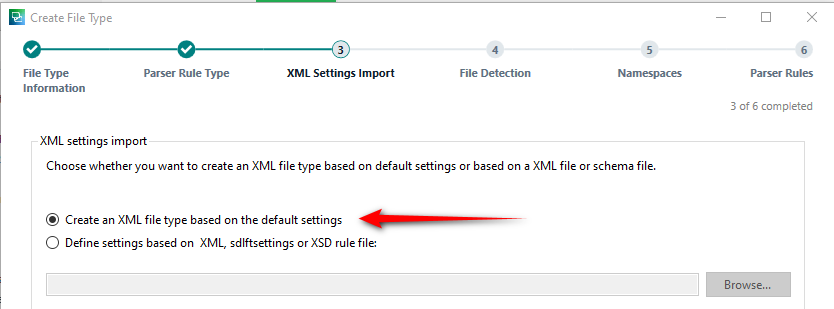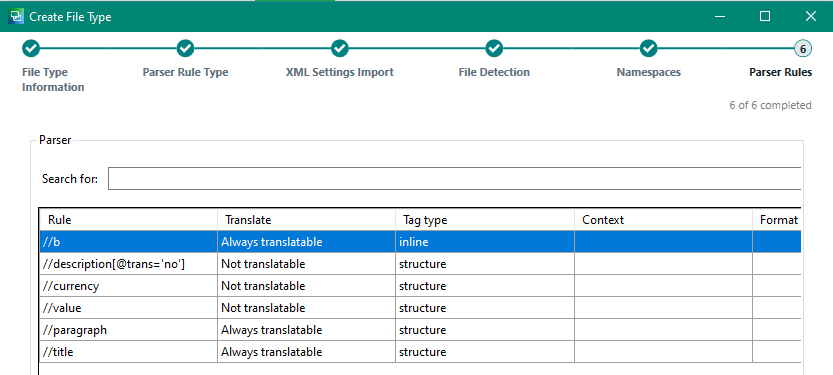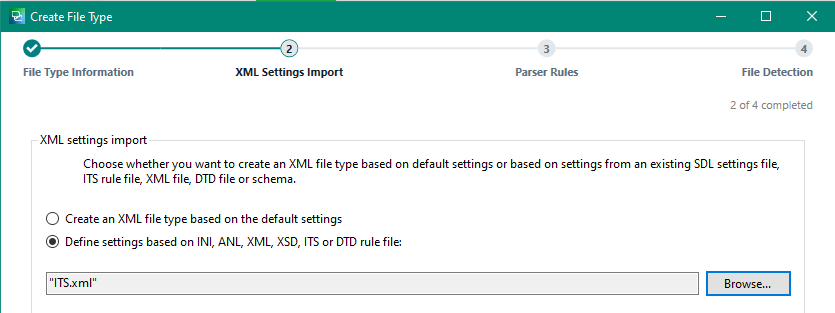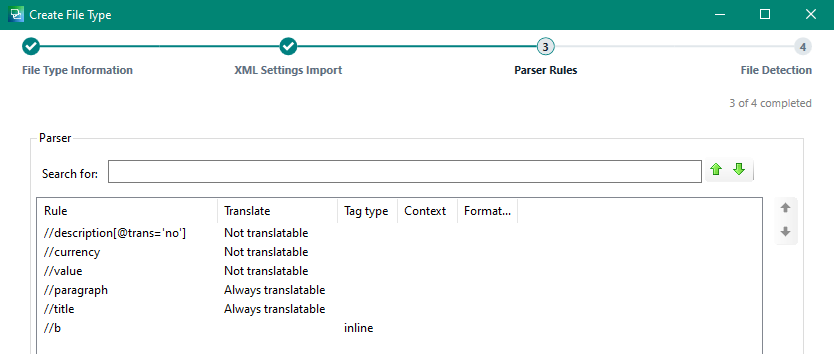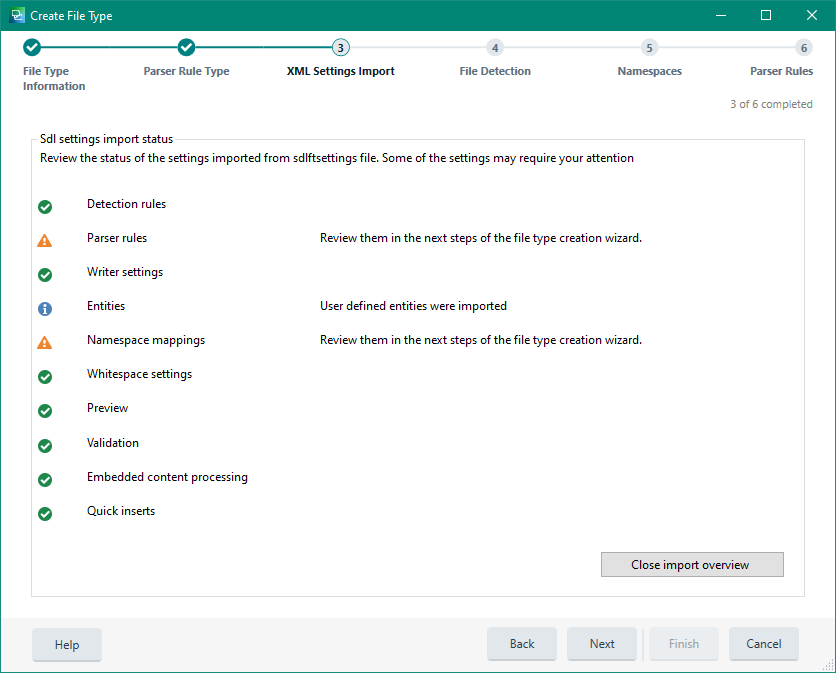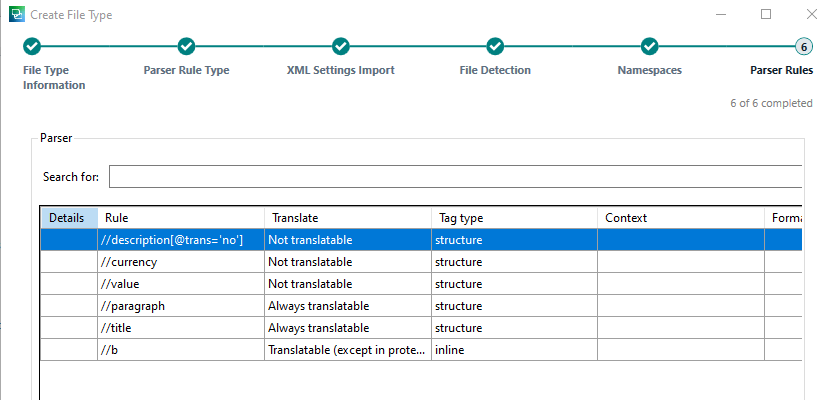Hi there,
I use Trados Studio Freelance version 2021. I want to create an xml based file type and use existing ITS and SRX files.
ITS:
Adjusting existing file type:
In the support I found this information about configuring file type settings:
On my configure parser page I only see Add, Edit, Delete, Deactivate, and no Import option. Is that something that comes with an upgrade to Trados Studio Professional?
Creating new file type:
I tried to create a file type based on specific xml settings by uploading an ITS file. But this gives an error telling me I have to use the standard ITS filter. But I cannot adjust the settings nor copy the settings of the standard xml ITS file type. Doesn't make a difference using its extension instead of xml - same error.

SRX:
My information up to now is that it is not possible to import SRX files into a file type definition. The only way to adjust segmentation rules is per language in the TM. Is there any other way?
Thanks!
Generated Image Alt-Text
[edited by: Trados AI at 4:41 AM (GMT 0) on 5 Mar 2024]


 Translate
Translate


